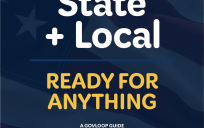In recent years, social media has emerged as the hottest Internet phenomenon ever created. Yet, despite its prominence as the number one online activity, the promise that social media holds for governments, businesses, educators, and politicians has yet to be fully realized. This is due in large part to (1) a variety of incorrect myths that large segments of society still believe about social media, which prevents widespread adoption in professional applications, and (2) a lack of awareness of how social media can be used for a number of branding, policy, and research applications.
OhMyGov! recently unveiled a white paper that attempts to debunk prevailing myths about social media and provide insights into how social media—when used and analyzed correctly—can identify trends, unravel mysteries in public perception of a person, organization or brand, evaluate the effectiveness of outreach campaigns, and even predict the future. Below is an excerpt from the paper.
Myth #1: Social media is free
Reality: Manpower is required to run a successful, or even an unsuccessful, social media campaign. These manhours translate into real costs that the organization incurs. The myth of social media being completely free leads organizations to undervalue the importance of running a successful social media campaign.
Myth #2: Social media is for kids
Reality: Middle-aged adults rule the social media space. While the early saturation of Facebook and MySpace by college students and teens has perpetuated the erroneous myth that all social media is dominated by the same age group, the average age now on Facebook and Twitter are 37 and 39, respectively, treated as a valuable business tool and data source.

Myth #3: Social media is just a fad
Reality: Now approaching its 15th year in existence and rapidly growing and evolving with each new quarter, social media has proven itself as a still fresh but well-established method of communication. Organizations attempting to ride out the social media wave on the sidelines must learn to recognize that social media is no more of a fad than email was.
Myth #4: Social media is only for socializing
Reality: This dated myth overlooks the incredible diversity of applications users have found for social media. Today, social media is used to break and track news stories, share product reviews, provide feedback to companies and governments, survey employees for new ideas on improving operations, orchestrate boycotts, and elect presidents. In fact, it seems that each new day brings a new application for social media.
Myth #5: Social media is not measurable
Reality: The relative popularity of political candidates can now be measured by their number of followers and mentions on social media platforms. These same numbers can be used as a litmus test for public sentiment towards politicians, brands, and campaigns. Similarly, campaigns waged on these platforms can be monitored and analyzed to determine the public’s response to the messaging,
regional variations in message uptake, key influencers or detractors, and the number of people reached by the campaign. In certain instances, social media can even be used to make predictions
as to future earnings or election outcomes.

Read the FULL REPORT




Awesome report. I recommend people check it out.
Nice site to know about. Under Good Gov I enjoyed the blog on Defunct federal websites live on in CyberCemetery: Web archive preserves growing piece of gov history By Brent LaMaire
Ever wonder where federal websites go when they die? To a cyber cemetery, naturally. (Yes, there really are such things.) The digital CyberCemetery within the University of North Texas Libraries serves as a permanent public archive that provides access….
Glad to hear it!
On Myth #4 – “Social media is only for socializing”, the point made seems to be (in part) that new media can serve a knowledge management function and as an analytic tool. Crowdsourcing would be another information enriching, rather than non-socializing function.
One interest I have is the role of new media in improved governance and oversight. Clearly leveraging transparency is one aspect of this, but there should be good usages emerging.